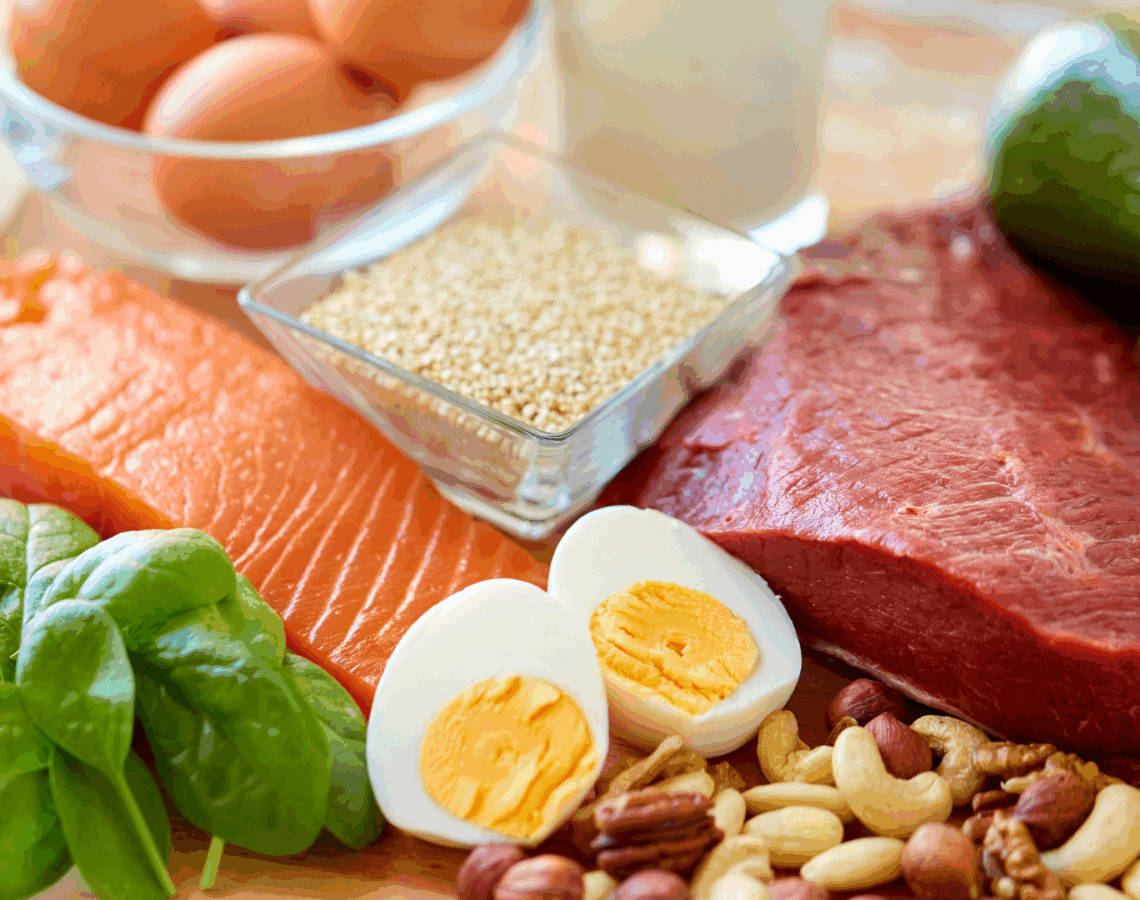The role of protein in keeping us healthy

Just as the buildings we live and work in are nothing without the bricks that make them, our bodies would also collapse without the nutritional building blocks that are protein.
Protein is made up from amino acids which – when absorbed by the body through food – allow us to grow, repair, and generally perform all the daily functions we take for granted.
Featherweight champion
Small but mighty, this key nutrient is one of the most important, and the protein we eat goes on to be a part of all human tissues. In fact, protein can be found in every cell in our bodies, from our hair, skin and nails to our vital organs and reproductive system.
The role of protein is especially important when it comes to growth – when cells are undergoing a period of rapid regeneration – and restoration – when cells have undergone damage and need a boost in getting back to their best, such as after high intensity sporting activities.

How much do we need?
Our protein needs vary at different stages of life and are highest during the first 2000 days, pregnancy, breastfeeding and for men and women aged over 70 years.1 The major food sources of protein in our diets are meat, poultry and fish (about 33%), cereals and cereal-based foods (about 25%) and dairy foods (about 16%).1
To get adequate protein, women aged 19 – 70 years need 2 to 2.5 serves of fish, lean meat, nuts, eggs, legumes/beans or tofu a day, which increases to 3.5 serves a day during pregnancy. Men aged between 19 and 70 years need slightly more than women, at 2.5 to 3 serves per day.3
To keep things really simple, use the ‘palm guide’ when serving up protein sources; a serve of lean meat is 65 grams and should fit into the palm of your hand.
Look beyond meat
So how do we best ensure we’re meeting our daily protein needs, and that they come from a variety of healthy foods beyond lean meat?
Lentils, pulses, and beans – such as kidney beans – are healthy sources of protein and can be added to soups or stews as a cost-effective way to create delicious, hearty meals that help meet your daily protein requirements. Fish, seafood, eggs, tofu, and dairy are also great protein sources to include in a varied eating pattern to meet your daily needs.

Broaden the BBQ!
It’s no secret that we Aussies love a steak or sausage, in fact, Australia is one of the biggest consumers of red meat per capita. It’s also true that too much can be harming our health. Processed and cured meats in particular can be high in added salts and saturated fat and should be limited. The Australian Dietary Guidelines recommend eating no more than 455g of lean red meat a week (one serve a day on average),4 and getting the rest of your protein from lean cuts of chicken, fish, seafood and other foods like eggs, beans, lentils, nuts, milk, yoghurt and cheese.
For some ideas on new ways to incorporate protein into your daily diet, check out our recipe’s hub.
A guide to serve sizes:5
- 65g cooked lean red meats such as beef, lamb, veal, pork, goat or kangaroo (about 90-100g raw)
- 80g cooked lean poultry such as chicken or turkey (100g raw)
- 100g cooked fish fillet (about 115g raw) or one small can of fish
- 2 large (120g) eggs
- 1 cup (150g) cooked or canned legumes/beans such as lentils, chick peas or split peas (preferably with no added salt)
- 170g tofu
- 30g nuts, seeds, peanut or almond butter or tahini or other nut or seed paste (no added salt)
Sources:
- National Health and Medical Research Council. Nutrient Reference Values – Protein. https://www.eatforhealth.gov.au/nutrient-reference-values/nutrients/protein. Accessed 1 March 2023.
- Jäger, R., Kerksick, C.M., Campbell, B.I. et al. International Society of Sports Nutrition Position Stand: protein and exercise. J Int Soc Sports Nutr 14, 20 (2017). https://doi.org/10.1186/s12970-017-0177-8
- National Health and Medical Research Council (2013). Australian dietary Guidelines – Recommended serves for adults. Source: https://www.eatforhealth.gov.au/food-essentials/how-much-do-we-need-each-day/recommended-number-serves-adults. Accessed: 1 March 2023.
- National Health and Medical Research Council (2013). Australian Dietary Guidelines. Canberra: NHMRC.
- National Health and Medical Research Council (2013). Australian Dietary Guidelines – Serve Sizes. Source: https://www.eatforhealth.gov.au/food-essentials/how-much-do-we-need-each-day/serve-sizes. Accessed: 1 March 2023.
Acknowledgement
This content has been developed by Health and Wellbeing Queensland’s team of expert nutritionists, dietitians, and exercise physiologists. Always visit your healthcare professional for dietary advice tailored to your circumstances.


